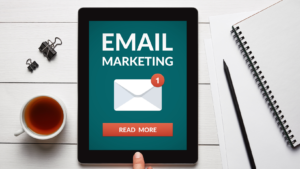You see free webinars everywhere nowadays and you must be wondering how do those presenters make money from them? It seems wherever you scroll through Facebook or Google etc, a webinar ad or invitation pops up.
They are a cost effective way to showcase your value proposition and generate qualified leads for your business. In pre-COVID days, events were an effective way to build brand awareness but with the evolution of technology and consumer behaviour, the pandemic brought a boost in the use of webinars for many companies including government bodies and Zoom became the go to provider overnight.
Now that everyone has shifted to mostly hosting meetings and events online due to the cost and location effectiveness, many businesses are looking for ways to monetize their webinars to generate business revenue and growth. So how do you make money?
Let me share 4 great strategies to help you on this journey:

1. Paid sponsorships
Similar to in-person events, paid sponsorships are where a third party pays to sponsor your webinar. Sponsored webinars usually provide advertising for the sponsor, opportunities for guest speakers, special offers or swag (Stuff We All Get) for your attendees so as to amplify their brand awareness and message to your target audience.
Sponsors will also provide all of the necessary marketing assets but your team will still need to do all of the preparation work and host the event. Therefore, you are responsible for reporting to the sponsors on the KPIs (Key Performance Indicators) and results so they know the effectiveness of the event.
You can have multiple sponsors but be sure to provide great value to them without compromising the quality and integrity of webinar experience for your target audience. Only then the webinar can be considered truly successful in terms of branding, engagement and growing your following.
2. Registration fees
Implementing registration fees are a great way to monetize when you have high profile presenters or influential speakers on the specific webinar topic and people are actually willing to pay as long as they can see the value in what is being presented. The higher the price of entry, the more value that needs to be offered to attendees.
This option is frequently used in the academic world where people are learning to acquire a new skill, personal or professional knowledge from the experts who have established their authority or branding on the specific topics.
You just need to integrate a payment option at the point of registration with any martech webinar platform and you are ready to go! The process should be easy and hassle free so attendees can finish the registration in a jiffy. Just be sure to check on this functionality before signing a contract with your webinar provider if you plan to monetize your webinars.

3. Third party presenter
This happens when a third party wants to present the webinar content to your target audience. It is a great way to generate some revenue while reducing your team workload.
When a third party presenter is involved, it helps to position them as a voice of authority on the topic to your target audience. This is highly beneficial to you because you are able to create the desired revenue stream while reducing the amount of resources invested into preparation and hosting.
You might still need to provide the script and presentation slides but you will not need to source for, prepare or pay guest speakers to present your content. It is highly advisable to schedule a full rehearsal with the presenting company to make sure everything runs smoothly throughout on the actual day of webinar.
4. Sell access to replays
This actually works whether you are hosting a free or paid webinar. Because most of the time, people will often either ask for access to a replay due to not being able to attend the webinar at that particular time as they have hectic schedules or they like to take more precise notes as a revision.
However, for paid webinars, you usually need to give much more value than a free version. Eg. You might want to include preparation assignments, worksheets, more useful links, practical tips and industry “secrets” so attendees will know the difference between a free webinar and a paid one.
Attendees who register for the paid version can have a free 30 minute consultation with you, this is usually quite effective as many businesses actually need proper advice on what is the next step or some redirection.
You can sell single replays or even lifetime access. It is recommended to start with a lower pricing and increase accordingly due to your branding, market demand and consumer behaviour. It is always a better strategy to have more people on a lower priced webinar than very few for a higher priced one.
In summary, these are some highly used methods for monetizing your webinar due to their simplicity and popularity. Everything is done online and you would have saved a lot of time and overhead costs in terms of event space, advertising banners etc. All the best in webinar monetization!






